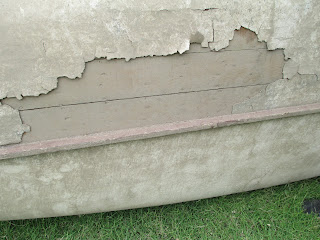As we got further into this project, I began to realize how much data we had to work with and was happy to see the enthusiasm my students had for what we were beginning to look at. I decided to continue the story with them and take advantage of the great information I had for this part of Reuben's life. Lucky for us, Uncle Reuben kept a journal during his traveling years. We divided his journeys into 30 parts and started mapping them out with colored yarn. We used brown for train travel, red for motorcycle, green for car and blue yarn for steamship and canoe. The questions kept coming as they studied the maps!
 |
| Teamwork! |
 |
| Lots of discussion! |
The next step was to figure out how many miles he traveled. That was a big job but my students dug in and, enthusiastically, got to work! They each made a “map measurer” using a gift ribbon and a marker. They marked 100 miles 10 times according to the legend on the map giving them 1000 mile measuring ribbons.
The first group began measuring using their estimating skills. One person stood at the board and wrote the miles for each leg of the journey. Another group measured the next day and either agreed with the measurements or wrote their miles next to the first miles. A third group settled 2 measurements by measuring again. The discussion I heard as I passed these groups was wonderful! I was so happy to see evidence of their growth as learners and inquirers!
 |
| Measuring and Recording Data |
Another group determined the type of transportation for each trip and coded it with a letter; c for car, ca for canoe, m for motorcycle, etc., on the board.
 |
| Transportation Team |
By this time I was ready to have my board back so I decided to set up three laptops facing the board and assigned students to type the information we had compiled into Excel. Each typist had a partner to check, point and help make sure they weren't skipping data. Some traded places after awhile.
 |
| Working in Excel and adding up the miles. |
When they were finished, I combined the three files into one. The class was excited when we put the data up on our Smartboard and I showed them how Excel lets us sort and filter. They used their calculators to add the miles of each mode of transportation. When we were finished, they had figured Uncle Reuben traveled about 19,200 miles between 1924 and 1934. Now they could display the miles according to transportation!
[As a side note: I was curious to find out how close they got to the actual miles with their little ribbons. I took the data file and compared it to actual miles using http://www.freemaptools.com/how-far-is-it-between.htm . I just about fainted when I finished adding them up for myself. They had gotten within 200 miles of the actual mileage! I don't think the kids actually understood how cool that was but I'm sure they recognized the look of pride on their teacher's face!]


























